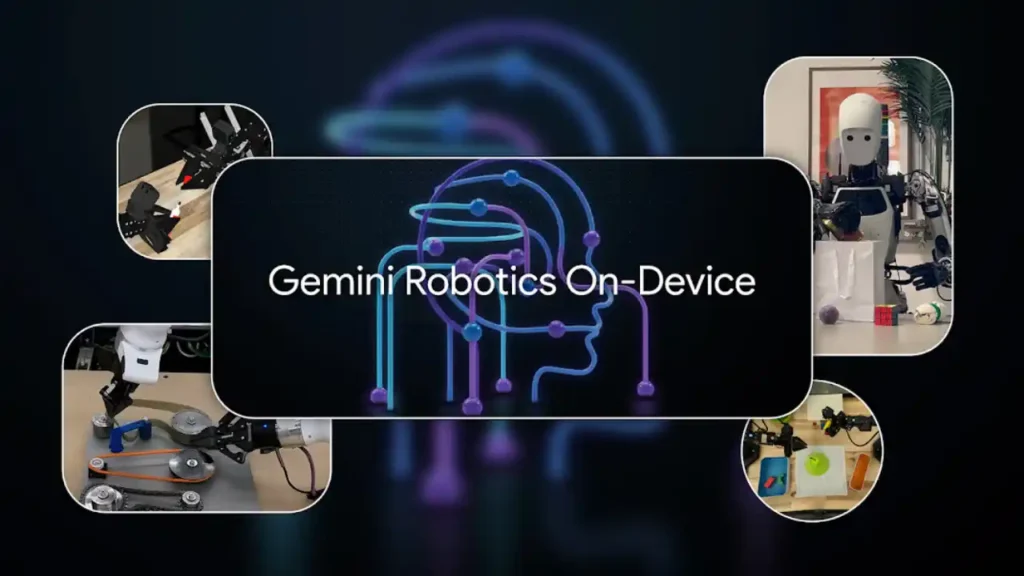Gemini AI Robotics On-Device is Google’s latest innovation in artificial intelligence — designed specifically for local robot control without relying on the internet. Built as an advanced extension of Gemini 2.0, this model allows humanoid and industrial robots to handle complex tasks completely offline. With its lightweight architecture and low-latency execution, Gemini AI Robotics On-Device could reshape industries like logistics, automation, and manufacturing.
🤖 What Is Gemini AI Robotics On-Device?
Gemini AI Robotics On-Device is a new machine learning model optimized for offline robotic operations. Unlike traditional AI that depends on cloud computing, this version processes language, vision, and actions locally on the robot’s hardware. This enables robots to perform real-world tasks in environments with limited connectivity or strict data privacy requirements.
⚙️ Gemini AI Robotics On-Device Features
- 📡 No Internet Needed: Works offline with ultra-low latency
- 🧠 Smart Learning: Learns from just 50–100 task demonstrations
- 🤝 Multi-Robot Support: Tested on Apptronik Apollo, Franka FR3, and others
- 🧰 Flexible SDK: Developers can fine-tune AI via MuJoCo physics simulations
This means robots can zip bags, fold clothes, or pour liquids just by observing a few examples — all without needing to call the cloud for help.
Also Read: iPhone 16 Pro Gets a Massive Price Cut in India – Save Up to ₹12,500 Today
🧪 Gemini AI Robotics On-Device Safety and Reliability
Google follows strict internal AI Principles with this release, ensuring:
- ✅ Semantic Safety Benchmarking for accurate task execution
- ✅ Low-Level Physical Controllers to prevent harmful actions
- ✅ Oversight by Google’s Responsibility & Safety Council
These features make Gemini AI Robotics On-Device suitable for industrial and real-world deployment, even in safety-critical settings.
🔧 Developer Tools: Gemini Robotics SDK
Google is offering access to the Gemini Robotics SDK for select partners. This toolkit allows developers to:
- Test the AI model in simulated environments like MuJoCo
- Adapt Gemini AI to various robotic arms and humanoid systems
- Apply local task customization for production-ready use cases
Interested developers can learn more on Google Research (DoFollow external link).
🌍 Why Gemini AI Robotics On-Device Matters
Unlike other AI systems, Gemini AI Robotics On-Device performs multi-step reasoning and dexterous control on local hardware. This is a major leap forward for robotic autonomy — and could impact industries such as:
- 🔧 Industrial automation
- 🏥 Healthcare robotics
- 📦 Warehouse logistics
- 🏠 Smart home assistants
It also aligns with a broader shift in AI toward decentralized, edge-computing solutions.
